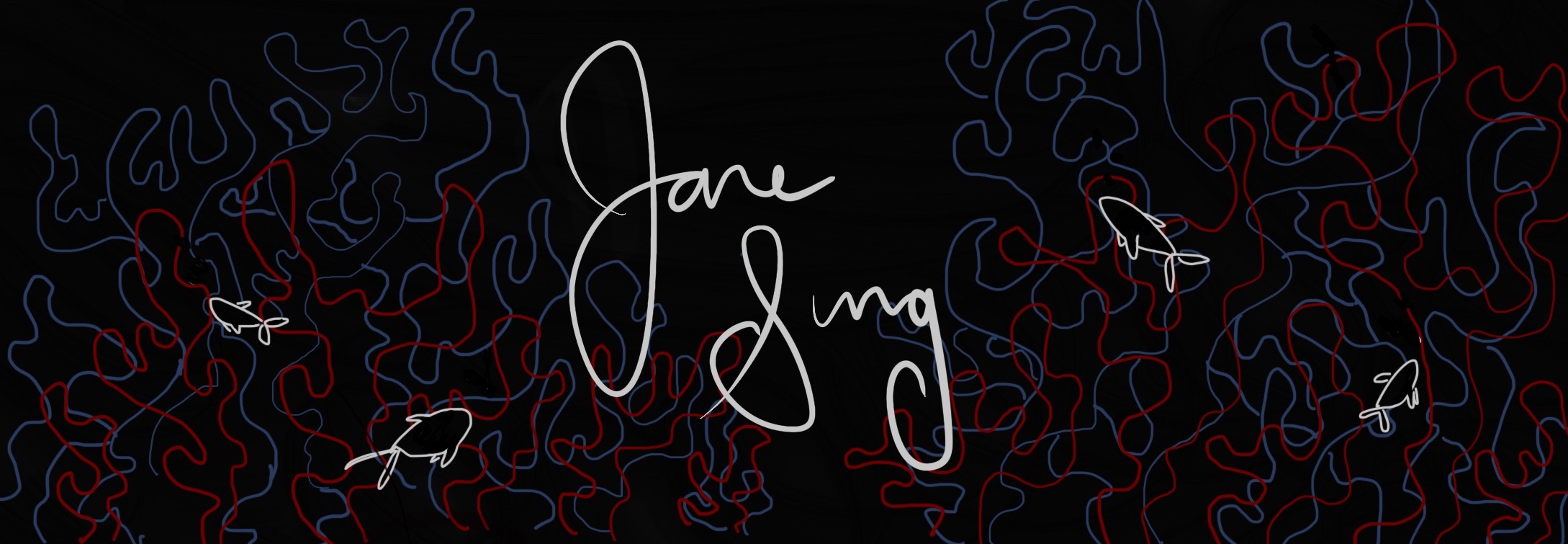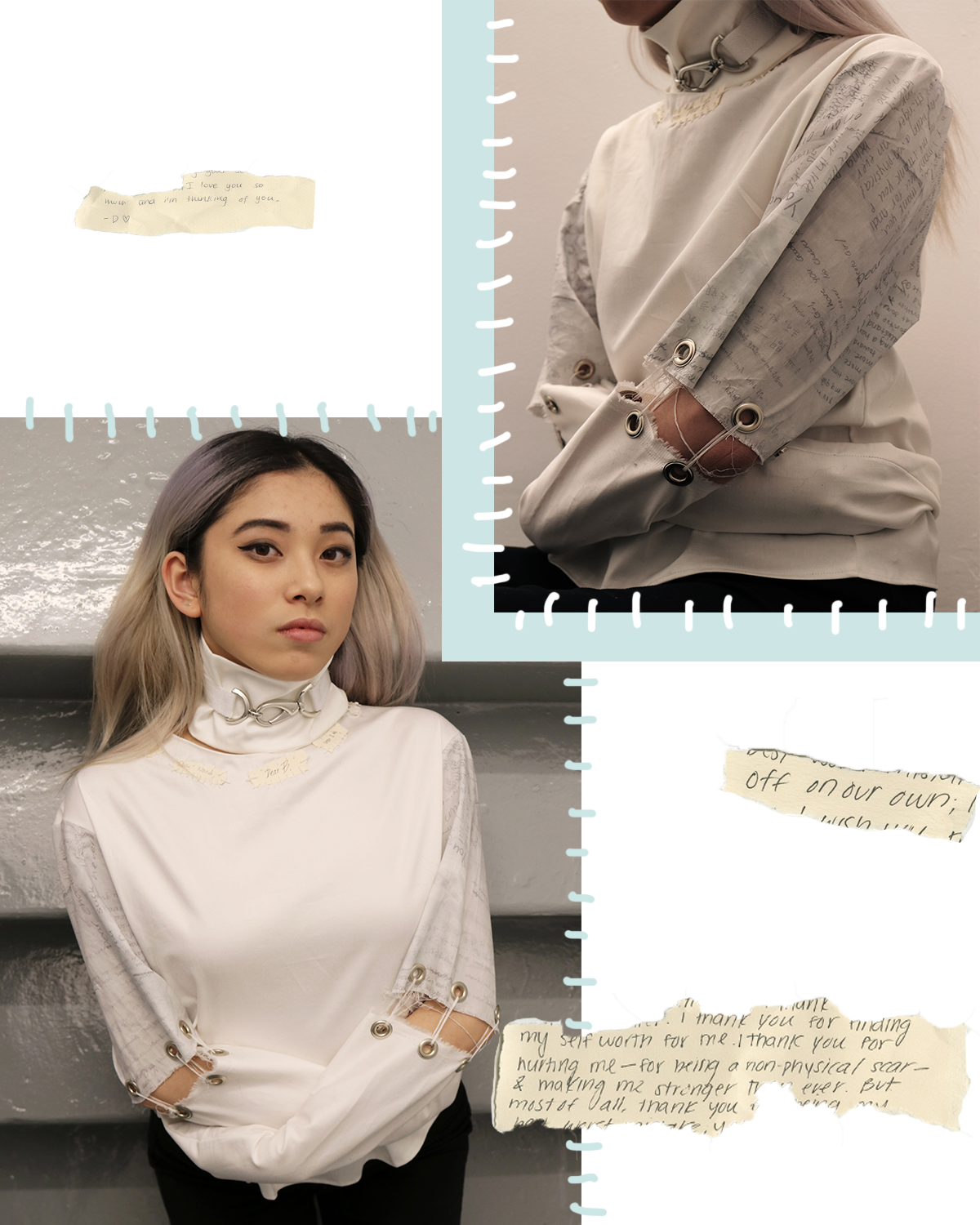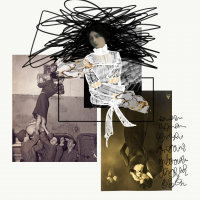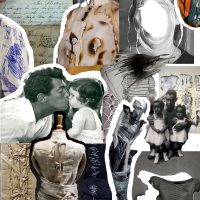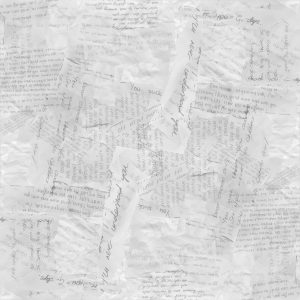Tear
Process:
Inspiration:
Making of:
My word is “tear” and in my essay I explored its different definitions and applications. My essay even ties loosely to this idea of multiple perspectives because there are so many different ways this word can go, positive or negative, yet at its core, they all manifest from extreme emotions. I began my essay with the negative and more violent connotations that come with “tear,” so for my project, I wanted to do that as well. I asked some of my friends or people I found while working on this to write letters to people they lost or lost a connection with. This was one interpretation of tear; something that would invoke the bodily fluid as a reaction of grief or anger. These are some of the letters, which I then proceeded to tear apart; a creative tool for deconstructing to construct something else.
I then put my own spin and perspective into this by creating a sort of collage where as a whole, the words wouldnt be completely visible.
With this, I decided to print it onto fabric and create a straight jacket to mimick the feeling of tightness around the chest that usually occurs when one feels grief or stress. I wanted to create something that feel so restrictive that you want to tear it off. When writing a letter, you feel this way, remembering all the emotions and things never said. But at the same time, it becomes part of the process of letting go. By releasing all feelings or whatever you have wanted to say, tearing becomes freeing and empowering.
Final:
My essay, catalogue, and project all explore the different definitions of the word, “tear.” Each starts off with the different negative connotations of violence and grief, but as they develop, the word transforms into things of positivity like creative tools and freedom or empowerment. My essay gives examples of how “tear” is shown as something physical, like a bodily fluid or a destruction to the body or environment. However, it shows that with the power of choice and human will, it can be something helpful rather than harmful. In my catalogue, the collection starts off with pieces of women crying to the physical shape of it, and then to violent looking art that gives a dark feeling. However, as it becomes a tool of deconstructing to reconstruct, it is shown that the process of tearing can become an expression of creativity and high energy. Finally, for my final project, I chose to create a straightjacket made of letters for people long gone. Though it seems very constricting and suffocating at first glance, it transforms into something freeing. Everyone can be stuck in their grief, but through letting go and releasing emotion, there is a second chance for freedom and empowerment, as shown through the peeking though of the skin in the sleeves and back. This pure skin symbolizes the renewal and refreshment of the body and soul.
Catalogue:
Project:
Essay:
Shift:
“What I’ve made for the final bridge project in studio and seminar is not what I would have made on the first day of either of these classes.”
Through my projects in Studio and Seminar, I learned to think more about process and to go step by step especially in projects where we weren’t told everything about the final outcome. As the projects went on, I became more and more comfortable in developing intention behind each of my pieces and giving myself room to change ideas as they went along. So for this project, I decided to go step by step and connect each step to my word “tear” in different interpretations. From “Gosh Boy George…” by Eve Sedgwick, she writes, “transformations like the one I have just sketched: about trying to find, nto a middle ground, but a ground for describing and respecting the inertia, the slowness.”
Through this class I really learned to incorporate multiple perspectives into my work and think of how I could incorporate different thoughts and opinions with my own. One of the first things we read in seminar was “Theme for English B,” by Langston Hughes and it goes, “You are white- yet a part of me, as I am a part of you. That’s American. Sometimes perhaps you don’t want to be a part of me. Nor do I want to be a part of you. But we are, that’s true!”
Moving Ahead:
Through this exploration, I enjoyed how something so multifaceted can be joined together and made into one. For future projects, I will incorporate this intensive process of thinking about each step and considering multiple perspectives into the final piece.
Seminar Reflection Questions:
- In Seminar, which assignments helped you to shift and in what specific ways? List at least two.During our Seminar classes, one of our first shifts was the focus from ourselves and our personal narratives to a broader spectrum of including other people’s stories and perspectives. Through the first Bridge in Seminar and Studio, we worked with a specific group of classmates, but our stories and goals were relatively similar. The first Seminar essay was a personal narrative of an exploration of a place from our memories, and though we did conclude it with a larger connection, it was still a familiar story. However, as we shifted our readings and discussions to topics of more social and politically charged issues, I encountered stories and readings of people I had a completely different life from. Reading The Argonauts by Maggie Nelson along with Judith Bulter and Eve Sedgwick’s pieces broadened by perspective. And through the Bridge 3 essay, I was not only able to connect art pieces with writing and my own thinking, but I was able to find connections between myself and my own story with those of completely different backgrounds. Another personal shift in my writing style and skill was when we started our Bridge 4 research and word exploration. Never before had I done research like this where I was completely open to anything that popped up. Also, the braided essay format did not have a specific format at all. I was so used to writing a specific way with a well organized thesis and support, but because the essay was an exploration within itself, I had complete freedom to make my ideas flow.
- In Seminar, which assignments proved particularly challenging? Why? How did you meet that challenge?I think the assignment I found most challenging was the Bridge 3 essay mainly because I did not fully know how to interpret the axioms given past the points that Eric had made. Therefore, it was difficult to brainstorm and create enough ideas and points to start my essay. However, once I stepped back and revisited the museum pictures and explored other works of the artist to get to know her better, I started finding connections I had never noticed before. Once I made these outside connections, I was able to develop my ideas and organize them into a well thought out essay.
- In Seminar, which assignment(s) that you completed might you consider a kind of failure? Why? How can you learn from this failure?I think that some of the LP post assignments we had to finish in class were not my best work. For example, the response to Dana Shutz seemed rushed and not fully developed partly because I did in fact feel rushed and pressured as I had to finish it within a smaller time frame, and I usually take awhile to think and reflect on my ideas before writing. However, I think as we did more and more of our discussions, I became more comfortable with relaxing my mind and thinking of good ideas, even if it was just one. I think I have to take my time in thinking of a well developed idea or point and writing it well, rather than trying to rush many things and mash as many points as I can. Rushing only makes things sound unpolished and messy.
- Throughout the semester, how has your writing ability shifted? Cite some examples to illustrate your point.My writing ability has shifted due to the fact that we have written many different things in approaches I had never come across before in my high school courses. The Bridge 2 profile was an interesting twist on a creative writing assignment. Because I was portraying someone I knew and had interviewed, I was timid to create an outrageous story for him. However, through our discussions and readings, I found that incorporating subtle hints towards his true identity were extremely effective, and gave me freedom and space to use my own imagination to personify him. This idea of using subtleties to make a point is effective in not only persuasion but in my Bridge 4 essay as well. I wrote my essay as an exploration of the word “tear,” however I wanted to make a point to connect all this information together. Using subtle connections, I was able to prevent it from sounding too much like an encyclopedia.
- In your writing, do you see common threads or themes? What ideas occurred to you again and again?I noticed that in my writing, I like to incorporate ideas of multiple perspectives. This has affected my work in Studio as well, as interviewing other people and incorporating different opinions have become a part of my creating process. In my Bridge 1, I talk about the different perspectives that I held with different ages, and my Bridge 2 and Bridge 3 touch upon the differences between the perspectives one holds to themselves and the perceptions made by other people and the outside world. My Bridge 4 drew upon all types of different meanings and connotations of the word, and my concluding point was that the different meanings and takes on the word all stem from a certain choice that one makes.
- Throughout the semester, how has your approach to reading shifted? Or how has text changed your work?Definitely due to this class, I look at texts differently because I was trained to constantly annotate and read actively, asking questions and taking note of prominent ideas. This made discussions in class more engaging and as we reread different parts of the text again in class, I found new ideas. This taught be to never just look over things once or twice. There is always something more, the deeper you read.
